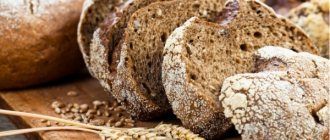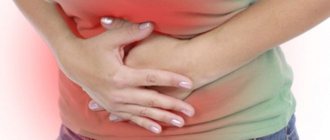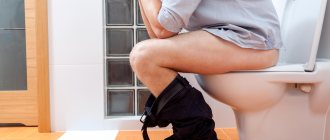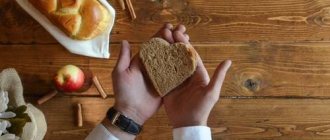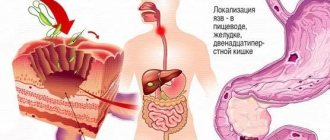Reflux esophagitis is an inflammation of the epithelium of the esophageal tube, resulting from the reflux of stomach contents into the lower part of the esophagus.
A diet for reflux esophagitis limits foods that irritate the epithelium of the esophagus, and also limits the amount of food consumed. To achieve the maximum effect in treatment, you need to combine dietary nutrition with medication treatment, as well as normalize your work and rest schedule. Let's figure out what you can eat if you have reflux esophagitis.
Nutrition for reflux esophagitis: rules
Dietary nutrition for gastroesophageal reflux disease limits the intake of certain foods and has a number of rules that must be followed to achieve a positive result.
This diet for gastroesophageal reflux disease involves split meals, that is, the patient should eat in small portions 5 to 6 times a day. The dishes should not be hot. also not recommended to eat very cold food . After eating, the patient should not immediately lie down to rest, nor do physical work involving bending the body forward.
After eating, the patient needs to walk a little, sit, and only after an hour can he lie down. This will eliminate the risk of stomach contents refluxing into the esophagus, since during this time the food will move into the intestines. The last meal should occur no later than 3 hours before bedtime.
What should you eat if you have reflux esophagitis? It is allowed to use food products that do not cause increased secretion of gastric juice, do not contain plant acids that do not contribute to increased gas formation.
Foods prohibited by the diet must be replaced with equivalent content of nutrients that are allowed to be consumed during reflux, so that nutrition remains complete.
Patients with esophagitis should not overload their stomach, they should refrain from overeating , do not eat rough and hard food, chew it well while eating, and avoid injuring the mucous membrane of the esophagus. In addition, you should not eat highly spicy, spicy or sour foods.
Depending on the individual characteristics of the body, each person reacts differently to food. If raw apples cause heartburn, you can bake them and eat them with honey or sugar. The same applies to berries; if consuming them fresh leads to discomfort, then compote or jelly is prepared from them.
Menu for the day
Correct dietary recommendations should include not only a list of prohibitions, but also teaching a person what to eat if they have GERD. With the right approach, the daily diet during the diet can be made quite varied, which is extremely important for a person’s normal life.
So, an approximate menu for GERD could be like this:
- Breakfast.
Cottage cheese casseroles or cheesecakes, which are cooked in the oven. You can add homemade liver pate or vinaigrette to them. The presence of cottage cheese in the diet is extremely important, as it is a source of calcium and proteins.
- Lunch.
Weak green tea served with yogurt or jelly. These products should not contain additives from sour berries or fruits.
- Dinner.
The main dish for a patient with gastroesophageal reflux disease should be puree soup. This first course is allowed for any type of disease, since the traumatic factor is completely excluded. It is better to cook the soup in vegetable broth and boil the meat separately.
Meat can be added to the soup before serving. For the second course you can eat boiled potatoes or mashed potatoes with steamed meatballs. You can drink it with tea or non-acidic compote. It is worth remembering that it is better to add honey to tea, not sugar.
- Afternoon snack.
Interesting! Medicine Cisapride - indications and features of use
An apple baked with honey is perfect for this meal. You can replace it, if desired, with cottage cheese casserole with apple.
- Dinner.
Porridge or rice noodles are suitable for an evening meal. The most common type of porridge, which is used in diet tables for the treatment of gastroenterological diseases, is rice. The porridge should be boiled fairly well. It is not recommended to use rice that becomes crumbly after cooking. Baked fish can be cooked with rice.
- Second dinner.
The best option for the second dinner would be to drink a glass of milk.
If the patient has fungal esophagitis, then all food should be pureed or crushed in a blender. This is due to the fact that candidal esophagitis is accompanied by the formation of growths that are injured when eating large pieces of food.
It is worth noting the fact that candidal esophagitis is a rather rare phenomenon. It occurs against the background of the fact that the esophageal mucosa loses its resistance to fungi against the background of constant inflammation due to reflux.
The diet should not be regarded as a complete method of treating GERD and esophagitis. It must be combined with etiotropic therapy. Effective treatment can be prescribed only after a visit to the doctor and a full examination.
How to eat with gastroesophageal reflux disease
General dietary recommendations for reflux:
- Before eating, drink a glass of boiled water. It will help reduce the acidity of gastric juice. It will also prevent the backflow of food into the esophagus.
- You can also reduce the acidic environment of gastric secretions if you eat a couple of pieces of raw potatoes, dried white bread or walnut kernels before eating.
- When reflux esophagitis is diagnosed, smoking and alcohol are excluded. Drinking alcohol, strong drinks, and eating at night is strictly prohibited.
- If the disease is accompanied by pain, then the patient should eat while standing, and after taking it, do not lie down for at least three hours. This way, food will move from the stomach to the intestines faster and the risk of reverse reflux will be reduced.
- It is very good to drink chamomile or calendula tea before bed. They have an anti-inflammatory effect and will relieve hyperemia and swelling from the mucous membrane of the esophagus.
- In addition, you need to refrain from physical exercise that creates abdominal tension, as well as wearing tight clothing and belts, especially around the waist.
If the disease worsens, the patient must inform the doctor. In this case, it is possible to transfer the patient to a more strict diet - table No. 1.
Diet for reflux esophagitis and gastritis
Since with catarrhal esophagitis the epithelium of the esophageal tube is inflamed, and with gastritis the lining of the stomach is damaged, the diet for these pathologies is aimed at reducing irritation of the mucous membranes of these internal organs. It also contributes to the normal production of gastric secretions and improvement of its motility.
This table involves eating pureed soups, viscous porridges, vegetable purees, and jelly. Doctors recommend baking, boiling or steaming dishes.
Products that increase gastric secretion are prohibited:
- fresh fruits and vegetables;
- vegetables containing essential oils;
- seasonings;
- sauces;
- marinades;
- smoked meats;
- hard and smoked cheese;
- fatty foods;
- fried and spicy foods.
You should not eat foods that cause flatulence:
- legumes;
- black bread;
- mushrooms;
- soda;
- chocolate;
- cabbage
Drinking alcoholic beverages and smoking during esophagitis is strictly prohibited. In addition, it is undesirable for patients to consume cow's milk, since it can relieve heartburn symptoms for a short period of time, but the proteins and calcium it contains increase gastric secretion.
Goat milk for reflux esophagitis can be drunk 1 glass daily in the morning. It will reduce the burning sensation in the esophagus, but with increasing dosage, the product can cause increased secretion of gastric secretions, which is undesirable for this disease. Milk is recommended to be used as a base for porridges; in this case, it is diluted in half with water.
also undesirable to eat sweet foods (baked goods, confectionery, cakes, yeast products) due to the high content of quickly digestible carbohydrates, which contribute to food fermentation and flatulence. This leads to increased pressure on the lower part of the stomach and the reflux of contents into the esophagus.
Prevention and complications
In order to prevent GERD and its complications, you must follow these rules:
- Unconditional adherence to the rules of healthy eating. In order to prevent GERD, everyone needs to follow a diet. She does not have serious restrictions, but does not recommend consuming large amounts of sour and spicy foods, as well as alcohol. In addition, it is recommended to avoid overeating.
Interesting! Symptoms of eosinophilic esophagitis - causes and diagnosis of pathology
- Periodic preventive examinations. Every healthy person should undergo a medical examination at least once a year. Its goal is not only to identify diseases, but also to teach patients the rules of a healthy lifestyle.
If the menu is not followed during reflux, then the risk of complications is high. The most dangerous of them are the appearance of a malignant tumor of the esophagus or Mallory-Weiss syndrome. This syndrome is characterized by the fact that bleeding develops from vessels located extremely close to the cardiac sphincter.
This condition is extremely difficult to treat and can recur. Mallory-Weiss syndrome is highly likely to be fatal.
Cancer of the esophagus and stomach is a common disease today. GERD and esophagitis quite often precede it. This pattern is due to the fact that frequent relapses can provoke the appearance of atypical cells in the tissues of the esophagus or stomach.
Diet for the above pathologies is an important element of their treatment. Compliance with the rules will help significantly improve your well-being, and also reduce the risk of relapses and complications.
What can you eat if you have this disease?
The proposed diet consists of pureed shaped dishes, viscous porridges, pureed fruits, cottage cheese, and soufflé-shaped dishes. With this disease, overeating is very dangerous, since it increases the load on the inflamed stomach, promotes stagnation of food and causes reflux. Therefore, doctors recommend taking food in small portions and not eating your fill.
The diet includes:
- soft boiled eggs;
- non-acidic fruits (banana, peach, apricot, plum);
- low-fat cottage cheese;
- fish and lean meat;
- dried white bread;
- porridge (rice, buckwheat, oatmeal, barley);
- vegetable stews, soups, casseroles;
- fruit juice (not sour, diluted with water in half);
- jelly;
- compote.
Consumption of bran bread, pasta, and potatoes helps maintain a feeling of fullness for a long time and prevents you from overeating. It is also good to drink daily decoctions of medicinal herbs in the form of tea (chamomile, rose hips, calendula).
Authorized Products
Despite the fact that esophagitis is associated with the stomach, the patient is still allowed quite a lot of food. The diet is based on foods that act as alkali, namely:
- boiled soups with cereals;
- fish and meat soufflé;
- milk and vegetable soups;
- fish, low-fat varieties, for example, carp, pike perch or hake;
- Meats include turkey, chicken and beef;
- White bread;
- apples and pears;
- crackers;
- boiled potatoes cooked in the oven;
- egg omelet, soufflé;
- carrots, beets;
- vegetables in the form of porridge;
- dairy products, but always with low fat content, namely yogurt, milk and kefir.
Any spices and salt are kept to a minimum. Drinks allowed include jelly, tea, always with the addition of milk, rosehip decoction, compotes, and herbal infusions. It is recommended to drink mineral water, which helps reduce stomach acidity.
Diet for gastroesophageal reflux disease: menu
A weekly menu for reflux esophagitis for every day looks like this:
Monday
In the morning: oatmeal, tea.
Afternoon snack 1: curd pudding, banana.
Lunch: vegetable soup, mashed potatoes, boiled rabbit meat, compote.
Afternoon snack 2: peach jelly.
Dinner: vegetable stew, baked pollock. Kissel.
Before bed, herbal tea.
Tuesday
In the morning: steam omelette, tea.
Afternoon snack 1: Maria cookies and apricot juice.
Lunch: vegetable soup, barley porridge, baked turkey meat, jelly.
Afternoon snack 2: strawberry jelly.
Dinner: boiled egg, cottage cheese casserole with jam.
Kefir before bed.
Wednesday
In the morning: rice porridge with milk, tea.
Afternoon snack 1: baked apples.
Lunch: Stewed potatoes, chicken meatballs, vegetable stew, jelly.
Afternoon snack 2: milk jelly.
Dinner: baked fish, vinaigrette, dried fruit compote.
Herbal tea before bed.
Thursday
In the morning: viscous barley porridge, jelly.
Afternoon snack 1: banana and biscuits.
Lunch: boiled pasta, baked rabbit, boiled cauliflower, rosehip infusion.
Afternoon snack 2: banana-pear smoothie.
In the evening: vegetable stew, baked fish, tea.
Yogurt before bed.
Friday
In the morning: buckwheat porridge, peach juice.
Snack 1: grated carrots with vegetable oil.
Lunch: lean fish soup, steam cutlet, vegetable stew, jelly.
Afternoon snack 2: fruit mousse.
In the evening: steam omelette, boiled chicken, compote.
Kefir before bed.
Saturday
In the morning: boiled rice, steamed meatballs, tea.
Afternoon snack 1: baked pumpkin with apples;
Lunch: vegetable soup, baked potatoes, baked rabbit meat, compote.
Afternoon snack 2: baked cottage cheese with jam.
Dinner: baked zucchini.
Ryazhenka before bed.
Sunday
In the morning: corn porridge with stewed onions, tea.
Afternoon snack 1: apple and banana dessert.
Lunch: buckwheat porridge, baked veal, beet salad, compote.
Afternoon snack 2: nalistniki stuffed with vegetables.
Evening: Fish with béchamel sauce, herbal tea.
Yogurt before bed.
A diet for reflux esophagitis, the weekly menu of which is discussed above, is the key to recovery.
Menu for esophagitis and reflux: recipes
We offer the best recipes for dishes for reflux esophagitis:
Baked apples
Peel the washed apples from seeds, place them on a baking sheet and bake in the oven at 180* for 20 minutes.
Meat pate
Boil meat (chicken, rabbit, veal), carrots, onions. After the ingredients have cooled, pass everything through a meat grinder 2 times, add butter and salt to taste. Instead of meat, you can take liver or mix them 50/50.
Useful video
We invite you to watch 2 interesting videos about proper dietary nutrition for reflux esophagitis. It's better to see once than to read ten times:
Potato zrazy
Boil the meat and pass through a meat grinder. Finely chop the onion, fry in vegetable oil, add salt. Boil the potatoes and mash them, add salt and mix with a raw egg. Mix meat with onions. Make pancakes from the puree, put minced meat in the middle, form zrazy, roll in white breadcrumbs and bake on a baking sheet in the oven.
Traditional methods of treatment
For reflux esophagitis, aloe, honey and Cahors are used to prepare a tincture, which also helps with gastritis. Crushed half a kilogram of aloe leaves is mixed with a glass of honey, left in the dark for 3 days, a bottle of Cahors is added and kept for another 3 days in a dark place. Drink 3 times a day, 1 tbsp. l. 30 minutes before meals for one month.
Is mineral water allowed for reflux esophagitis? Mineral waters “Essentuki 17”, “Essentuki 4”, “Narzan” are used to treat reflux esophagitis, since they contain an alkali that neutralizes the effect of the acidic environment of gastric juice.
You need to take it warmed up to 38-45 * 200 ml before meals.
"Borjomi" for reflux esophagitis is also allowed for use.
Sea buckthorn oil for reflux esophagitis helps relieve inflammation of the esophageal mucosa if taken 1 tbsp. l. three times a day. You cannot drink it on an empty stomach. You can buy oil at a pharmacy.
Flax seeds are allowed for reflux esophagitis, which envelop the mucous membrane of the esophagus and prevent the negative effects of the acidic environment of gastric contents on it. Seeds (70 g), pour 1 liter of water, boil for 2 hours, cool and take 200 ml 1 hour before meals three times a day. Treatment lasts 2 months.
How to gain weight with reflux esophagitis
A strict diet should be followed only during an exacerbation. Next, you need to avoid foods that cause heartburn. To increase weight, you need to eat 5-6 times a day, but do not overeat. Combine pasta and mashed potatoes with protein foods (cutlets, meatballs), combine porridge with nuts, raisins or meat products.
You can eat halva and kozinaki. It's good to drink vitamin cocktails. In the afternoon, drink a mixture of cottage cheese, jam, milk and banana. This diet will help you increase your body weight.
Diet during remission
After the phase of exacerbation of the disease (during the period of remission), the patient is transferred to diet No. 1. This is a complete diet that prevents relapse, since it is moderately gentle on the digestive tract.
It contains a reduced amount of animal fats, as they reduce the tone of the sphincter (butter, heavy cream, fatty meat and fish, confectionery). Diet for reflux esophagitis also excludes the consumption of foods that irritate the mucous membrane (coffee, strong tea, mint, onions, garlic, chocolate, tomatoes).
Diet No. 1 for reflux esophagitis allows the use of:
- vegetable soups seasoned with butter or egg-milk mixture. Vegetables cannot be sautéed. Cereals should be well boiled and vegetables pureed;
- dried bread, crackers (no more than 200 g);
- dietary meat (beef, turkey, lamb, chicken). You need to grind it twice in a meat grinder, and then make steamed cutlets, quenelles, and soufflés. You can bake meat without forming a rough crust (in foil);
- lean fish. Can be consumed in pieces or in the form of cutlets;
- porridge (rice, buckwheat, semolina). They are prepared semi-viscous, milk can be added to them;
- milk, kefir, medium-fat cottage cheese;
- butter (up to 20 grams) and vegetable oil. Add to prepared dishes;
- boiled vegetables. It is allowed to eat potatoes, beets, cauliflower, carrots, pumpkin, and zucchini in the form of puree; mashed fruit. Jelly, jelly, compotes, and purees are prepared. Avoid the consumption of citrus fruits and raw fruits;
- weak tea, diluted sweet juices, herbal drinks.
To avoid increased acidity of gastric juice, irritation of the mucous membrane and flatulence, it is recommended to remove from the menu:
- mushrooms;
- pickled, salted, pickled vegetables;
- fatty meat or meat with veins and tendons;
- smoked meats, canned food;
- fried and spicy dishes, stews;
- sauces (mayonnaise, mustard, ketchup);
- sour or fiber-containing vegetables and berries, fruits (tomatoes, onions, garlic, radishes, white cabbage, radishes, cucumbers, asparagus, sorrel, lemon and other citrus fruits, grapes, gooseberries);
- sour cream, yogurt, sour kefir, 35% fat cream, blue cheese;
- puff pastry, butter, yeast dough;
- seasonings, spices;
- pasta;
- millet, corn and pearl barley;
- sour juices (from tomatoes, pomegranates, citrus fruits, currants), carbonated drinks, alcohol, beer, kvass, coffee, strong tea;
- chocolate, halva, ice cream;
- nuts, dates.
With catarrhal esophagitis, the diet may not be so strict, but if pain occurs when passing a bolus of food, then you need to wipe the food to eliminate mechanical irritation of the esophagus. Heartburn is eliminated with the help of milk, so if it is well tolerated, you can drink it for breakfast, dinner and before bed, or add it to milk porridges.
As the mucous membrane recovers and reflux disappears, twisted lean meat or meatballs can be added to soups. Fish and meat cutlets are served with a side dish or vegetable puree. If erosive esophagitis has developed, then dietary nutrition must be adhered to constantly.
This is the only way to avoid relapses of the disease and the occurrence of heartburn, belching, and heaviness in the stomach.
What you can eat with esophageal esophagitis in each specific case will be determined by your doctor, since recommendations should take into account concomitant diseases. Since the diet must be followed constantly, the menu for reflux esophagitis must be drawn up together with a nutritionist.
The specialist will calculate how many calories the patient needs to consume, taking into account his age, gender, body weight and physical activity, and the meals will contain the amount of vitamins and minerals corresponding to age standards. The doctor will also tell you which foods should be present in the diet every day and which ones should not be included every day.
When treating reflux esophagitis, drug therapy is also prescribed, which is designed to eliminate symptoms, reduce the acidity of gastric juice and speed up the recovery of the mucosa. Before using them, you need to read the instructions and follow them strictly so that the medicine does not harm the inflamed tissues.
For example, proton pump inhibitors only work if they are taken half an hour before meals, and if taken incorrectly, they will increase the load on the excretory organs and will not have a therapeutic effect. Reflux esophagitis may require surgical treatment, but it is better not to let it get to that point, but to follow all the doctor’s instructions and strictly follow the diet.

